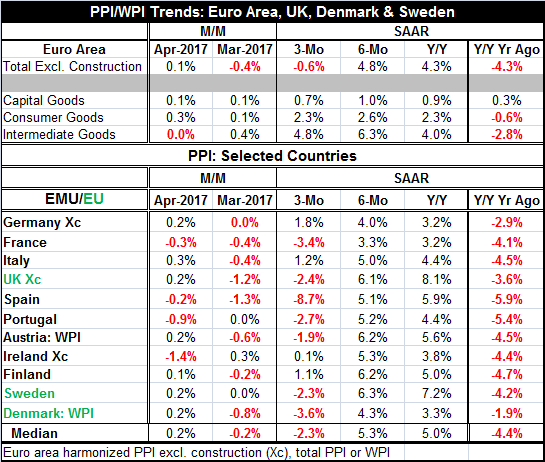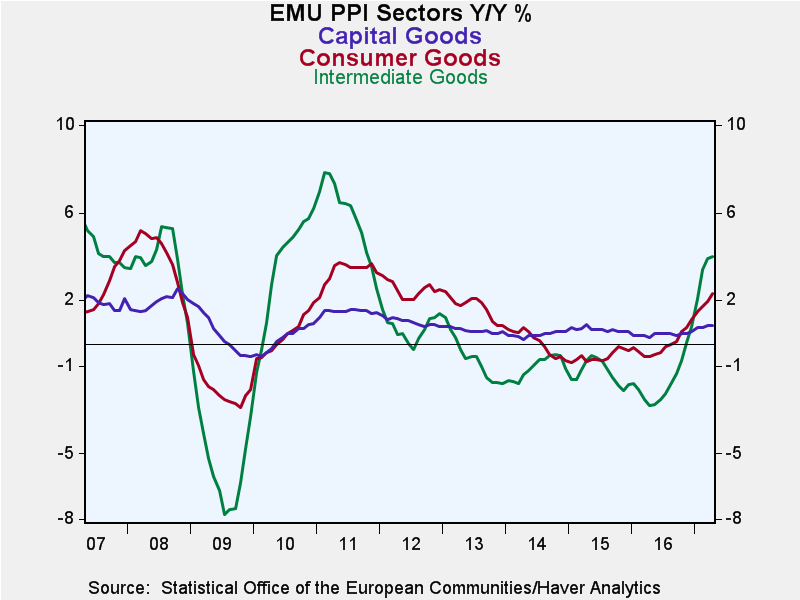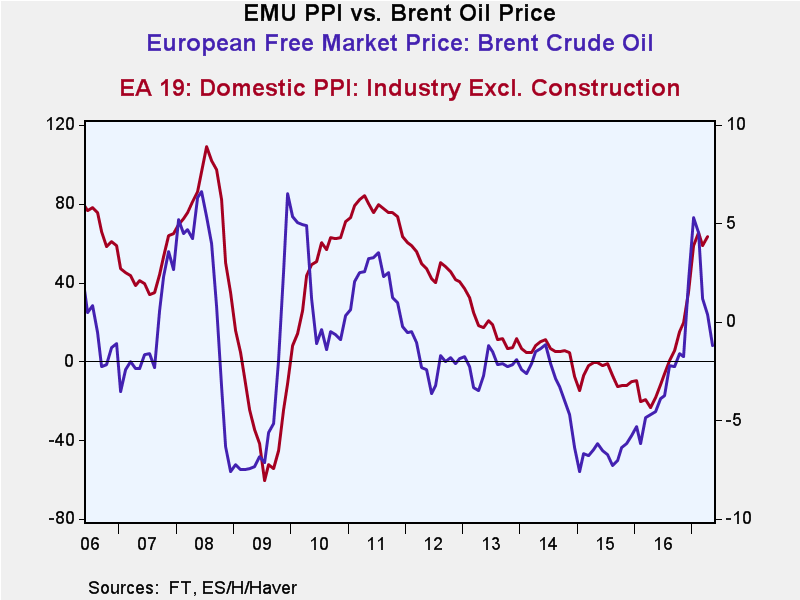 Global| Jun 02 2017
Global| Jun 02 2017EMU PPI Barely Gains in April But Year-on-Year Rate Rises to 4.3% from 3.9%
Summary
The overall PPI (PPI excluding construction) rose by 0.1% in April after falling by 0.4% in March. The year-on-year pace is up to 4.3%, but the three-month change shows a 0.6% decline at an annualized rate. This unwinds the [...]
The overall PPI (PPI excluding construction) rose by 0.1% in April after falling by 0.4% in March. The year-on-year pace is up to 4.3%, but the three-month change shows a 0.6% decline at an annualized rate. This unwinds the acceleration from a 4.8% pace over six months.
Oil is mostly responsible for whatever liftoff pattern is in the pipeline. Capital goods prices rose by 0.1% in April and are up at a rate of less than 1% (annualized) over three months, six months and 12 months. Consumer goods prices at the producer level rose 0.3% in April and are cruising at a 2.3% to 2.6% pave over three months, six months and 12 months. Intermediate prices went dead flat in April but are rising at 4.8% annual rate over three months, 6.3% pace over six months and 4% over 12 months.
At the country level, the PPI is falling in April in 4 of 11 of the EU/EMU members in the table. This is after prices fell on the month in seven countries in March when German inflation came in dead flat. As a result of these trends, inflation across these countries is falling in seven of them.
Across Europe, the fastest inflation is at 8.1% in the U.K., boosted by weak sterling, 7.2% in Sweden and 5.9% in Spain. The lowest year-on-year inflation is 3.2% in Germany, 3.2% in France, and 3.3% in Denmark.
On the day's trading, oil prices slipped below $50 per barrel. With oil still sputtering, the force behind the rise of the PPI is losing steam. The slippage in the PPI should set the stage for a softer PPI going ahead.

Robert Brusca
AuthorMore in Author Profile »Robert A. Brusca is Chief Economist of Fact and Opinion Economics, a consulting firm he founded in Manhattan. He has been an economist on Wall Street for over 25 years. He has visited central banking and large institutional clients in over 30 countries in his career as an economist. Mr. Brusca was a Divisional Research Chief at the Federal Reserve Bank of NY (Chief of the International Financial markets Division), a Fed Watcher at Irving Trust and Chief Economist at Nikko Securities International. He is widely quoted and appears in various media. Mr. Brusca holds an MA and Ph.D. in economics from Michigan State University and a BA in Economics from the University of Michigan. His research pursues his strong interests in non aligned policy economics as well as international economics. FAO Economics’ research targets investors to assist them in making better investment decisions in stocks, bonds and in a variety of international assets. The company does not manage money and has no conflicts in giving economic advice.








